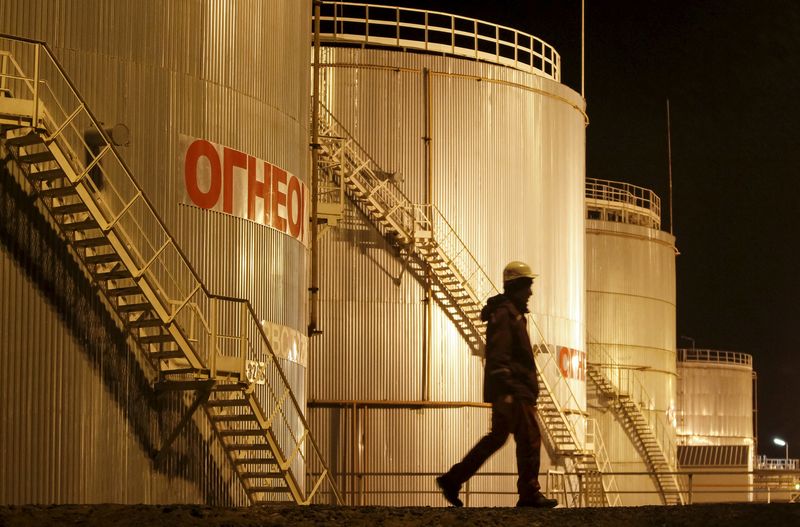By Barani Krishnan
Investing.com - U.S. crude prices posted a fourth straight day of gains, settling firmly above $80 per barrel on Tuesday, as the trade awaited weekly inventory data that could show another build in a market paying scant attention to any negative data on oil.
U.S. crude’s West Texas Intermediate benchmark settled up 12 cents, or 0.2%, at $80.64 per barrel. WTI has gained more than 4% since its last drop of nearly 2% on Wednesday.
Tuesday’s firmer close came as the dollar rose to a one-year high on expectations that the Federal Reserve will announce a tapering of its massive bond-buying program next month amid concerns of runaway inflation from soaring energy prices. Typically, a stronger dollar will weigh on dollar-denominated commodities.
London-traded Brent crude, the global benchmark for oil, settled at $83.42, down 23 cents, or 0.3%. It was Brent’s first decline after a three-day winning streak that netted more than 3%.
“The focus over the next 24 hours will be on US stockpiles, which have been increasing,” said Ed Moya, analyst at online trading platform OANDA. He, however, cautions that a surprise draw instead of build could “easily send WTI crude back above the $82 level”.
The American Petroleum Institute will issue at 4:30 PM ET (20:30 GMT) a snapshot on U.S. crude, gasoline and distillate stockpiles for the week ended Oct 8. The figures serve as a precursor to the official weekly inventory data due on Wednesday from the EIA, or U.S. Energy Information Administration.
Analysts tracked by Investing.com have forecast that crude inventories rose by 140,000 barrels last week, on top of the previous week’s build of 2.35 million.
Gasoline inventories likely rose by 133,000 barrels, after the build of 3.26 million in the previous week, forecasts showed.
Stockpiles of distillates, which include diesel and heating oil, is expected to have dropped by 1.0 million barrels, extending the previous week’s slide of 396,000.
While oil prices closely follow economic growth, the current rally in crude is completely at odds with the inflationary burden experienced by economies emerging from 18 months of varying hardship imposed by the coronavirus pandemic.
The IMF said in its World Economic Outlook on Tuesday noted that the momentum of growth has weakened while uncertainty has increased. The IMF is concerned that surging commodity prices will force central banks into tightening cycles that could trigger selloffs in global equities.
Fed Vice Chairman Richard Clarida said the central bank was not embarking on a rate hike as yet, but will most likely taper its long-running economic stimulus which has been blamed for adding to price pressures.
“Oil price volatility remains elevated as investors await to see how the global energy crisis unfolds,” Moya said, adding that one interesting development will be how Western governments deal with Iran — the virtual outcast in OPEC which has meaningful supply elasticity in oil due to U.S. sanctions on the country.
“Iran’s ability to ramp up production could easily save Europe if it has a cold winter,” noted Moya. “Both sides have added motivation since the talks stalled in June. If progress is made after several weeks of talks, a revival or the Iran nuclear deal could immediately bring Brent back towards the mid-$70s.”
